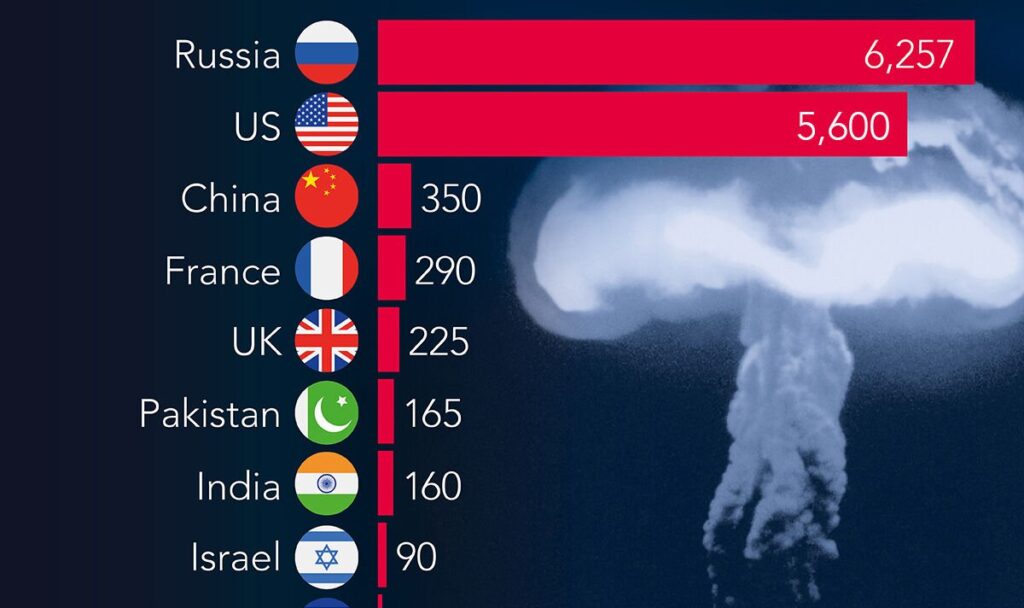The Decline of Nuclear Disarmament
The global movement toward Nuclear Arsenal appears to be losing momentum, according to recent findings by the Stockholm International Peace Research Institute (SIPRI). Amid rising geopolitical tensions and ongoing regional conflicts, SIPRI reports a slight increase in the number of operational nuclear warheads over the past year. As of 2025, there are approximately 9,614 warheads ready for use—an increase of 0.3% compared to 2024—out of a total stockpile of 12,241, which includes decommissioned weapons.
The institute warns that efforts toward disarmament are more stalled than at any point since the Cold War, especially with the near-complete breakdown of strategic arms discussions between the United States and Russia.
China’s Accelerating Nuclear Expansion
China is rapidly expanding its nuclear capabilities, outpacing other nations in modernization and infrastructure development. SIPRI notes that China has been constructing new intercontinental ballistic missile (ICBM) silos across northern and central-eastern regions of the country. Since 2023, its arsenal has grown by about 100 warheads annually, reaching an estimated 600 by 2025. This growth places China third globally in terms of nuclear stockpiles.
Despite this expansion, most of China’s warheads are not yet mounted on launch-ready systems. Analysts suggest that by 2030, China could possess a comparable number of ICBMs to either the U.S. or Russia, though its overall arsenal will likely remain smaller. Diplomatic tensions, particularly concerning Taiwan and ongoing economic sanctions, have disrupted nuclear-related dialogue between Beijing and Washington.
U.S.-Russia Arms Control at Risk
Russia and the United States continue to dominate the global nuclear landscape, collectively holding nearly 90% of all nuclear weapons. Both countries are heavily investing in modernizing their arsenals, raising concerns about a possible increase in deployed warheads once the New START treaty expires in February 2026.
While Russia has faced challenges in its modernization programs—including test failures and delays with the Sarmat ICBM—other upgrades are moving forward slowly. Meanwhile, the U.S. is under pressure to respond to China’s advancements. Potential measures include activating idle missile silos, expanding non-strategic nuclear forces, and deploying more warheads to existing delivery systems.
Nuclear Developments in Europe: France and the UK
France remains Europe’s leading nuclear power with a stockpile of around 290 operational warheads. The country is advancing its nuclear capabilities through the development of new submarine-launched ballistic missiles and air-launched cruise missiles.
Similarly, the United Kingdom is enhancing its nuclear deterrent through maritime forces. While its nuclear count has remained stable at 225 warheads, the UK recently announced significant investments in up to 12 new nuclear-powered submarines under the AUKUS defense pact. This expansion is part of a broader £15 billion (€17.5 billion) initiative aimed at strengthening its warhead infrastructure in response to evolving security threats.



















